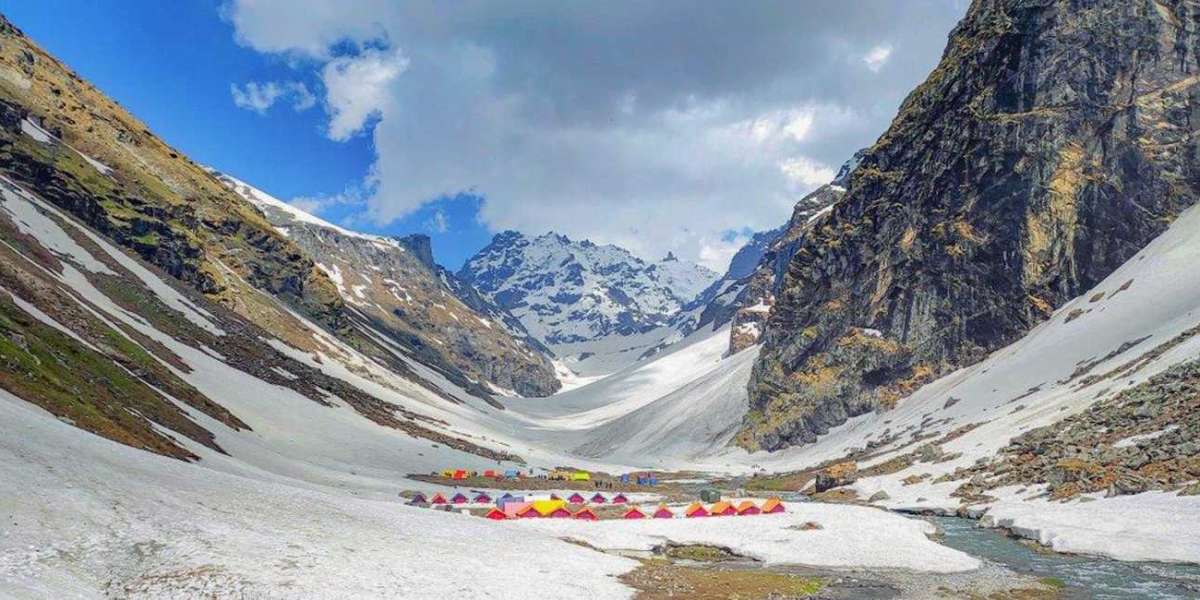INTRODUCTION
Hidden in the midst of the breathtaking landscapes of the Indian Himalayas lies the Hampta Pass trek. It is a thrilling expedition that takes adventurers on a journey of a lifetime, connecting the lush green valleys of Manali to the barren, high-altitude deserts of Spiti, this trek offers a diverse range of experiences. From dense forests to snow-capped peaks it has everything, making it a popular choice among both seasoned trekkers and novices looking to explore the natural beauty and challenge of the Himalayas.
This article will take you through an imaginary ride breathtaking Manali to the mesmerizing Hampta Pass trek, highlighting its route, attractions, challenges, and the unique blend of landscapes that make it an unforgettable adventure.
ROUTE AND ITINERARY
The Hampta Pass trek typically spans over 4 to 6 days, covering a distance of approximately 35-45 kilometres, depending on the specific route and side trips chosen. The journey starts from the picturesque town of Manali, Himachal Pradesh, known for its scenic beauty and as a gateway to various Himalayan treks. The trek is named after the Hampta Pass, which lies at an altitude of about 4,300 meters and serves as the transition point between the Kullu Valley (Manali side) and the Lahaul and Spiti Valleys.
Day 1: Manali to Jobra (2,987 meters)
The trek begins with a drive from Manali to the village of Jobra. This leg of the journey takes trekkers through a pine forest and offers glimpses of the Rani Nallah River.
Day 2: Jobra to Jwara (3,383 meters)
This day involves a moderate ascent through lush meadows and a gradual climb to Jwara. Trekkers are treated to mesmerising views of the surrounding peaks.
Day 3: Jwara to Balu Ka Ghera (3,780 meters)
The landscape transforms as the trail leads to an alpine plateau called Balu Ka Ghera. Here, the verdant greenery gives way to rocky terrains, preparing trekkers for the ascent to Hampta Pass.
Day 4: Balu Ka Ghera to Shea Goru via Hampta Pass (4,298 meters)
The highlight of the trek is the crossing at the Hampta Pass. The climb is challenging but incredibly rewarding, offering panoramic views of snow-capped peaks and valleys below. The descent to Shea Goru brings trekkers into the vast, arid landscapes of Spiti.
Day 5: Shea Goru to Chatru (3,353 meters)
The trail leads trekkers along the Chandra River to Chatru, passing through picturesque meadows and rocky paths.
Day 6: Chatru to Chandratal Lake (4,298 meters) and back to Manali
An optional extension to the trek takes trekkers to the enchanting Chandratal Lake, known for its turquoise waters and stunning reflections of the surrounding mountains. The trek concludes with a drive back to Manali, filled with memories of an incredible journey.
ATTRACTIONS AND LANDSCAPES
One of the most remarkable aspects of the Hampta Pass trek is its varied landscapes. The journey begins in the lush green valleys of Manali which is filled with dense forests, gushing rivers, and vibrant flora. As trekkers ascend, the scenery transitions to alpine meadows where wildflowers bloom during the summer months. The highlight, of course, is the crossing of Hampta Pass itself, where the landscape transforms dramatically into a high-altitude desert with rocky terrain and breathtaking views of towering peaks and deep valleys.
Descending into the Spiti Valley, trekkers are greeted by a stark, lunar-like landscape characterized by barren mountains, vast expanses of loose gravel, and a striking lack of vegetation. This stark contrast to the lush Kullu Valley adds an element of adventure and awe to the trek, as trekkers are able to experience two distinct ecosystems within a relatively short span.
CHALLENGES AND CONSIDERATIONS
While the Hampta Pass trek offers an unforgettable experience, it is important to be prepared for the challenges it presents:
Altitude: The trek takes trekkers to high altitudes, with Hampta Pass reaching over 4267 metres. Acclimatization is crucial to prevent altitude sickness. Trekkers should be aware of the concerned symptoms and take necessary precautions.
Weather: Weather conditions can be unpredictable in the Himalayas. The temperature can drop rapidly, particularly at night. Proper clothing and gear are essential to stay warm and comfortable
Terrain: The terrain varies from well-defined paths to rocky and steep sections, especially during the ascent to Hampta Pass. Physical fitness is important for tackling the challenges of the trail.
Lack of Facilities: The Spiti Valley, in particular, has limited facilities due to its remote location. Trekkers should be prepared for basic accommodations and limited food options.
Permits: Some sections of the trek, especially those near Chandratal Lake, may require permits. It is essential to obtain the required permits in advance.
CONCLUSION
The Hampta Pass trek is a thrilling adventure that encapsulates the diverse beauty of the Indian Himalayas. From the lush green valleys of Manali to the stark landscapes of Spiti, trekkers are treated to a unique blend of environments and vistas. The challenge of crossing Hampta Pass, combined with the alluring views and the sense of accomplishment at the end, makes this trek a truly unforgettable experience. As adventurers embark on this journey, they not only conquer physical challenges but also immerse themselves in the unparalleled beauty of nature, creating memories that will last a lifetime.




